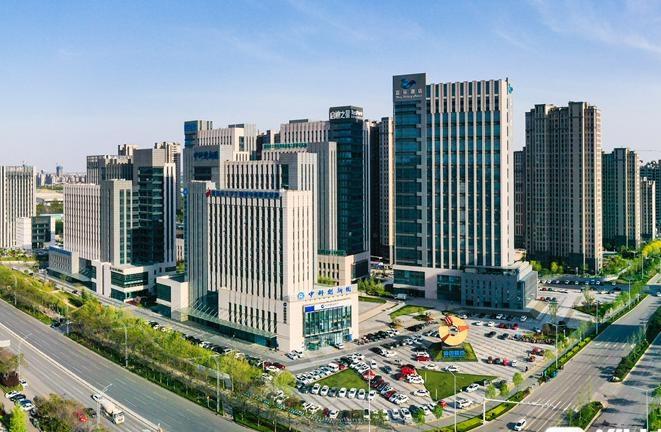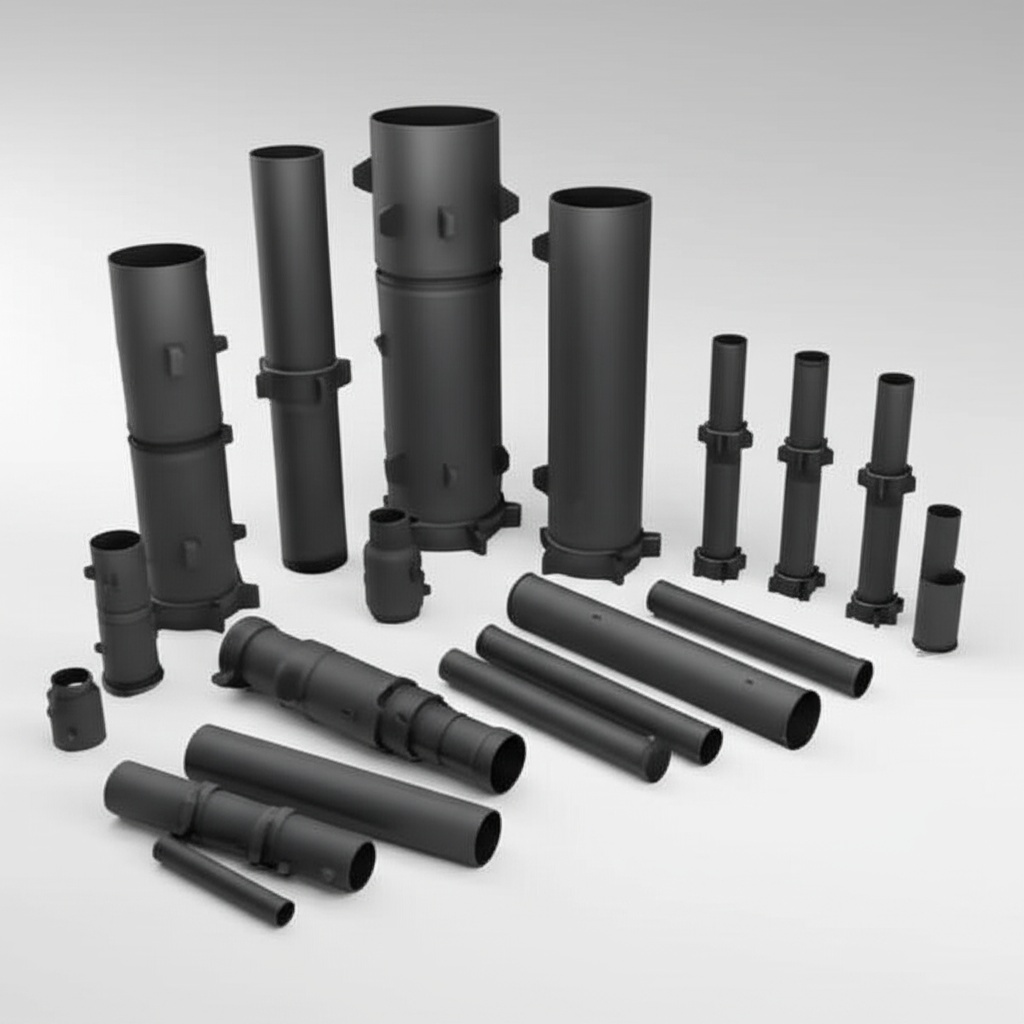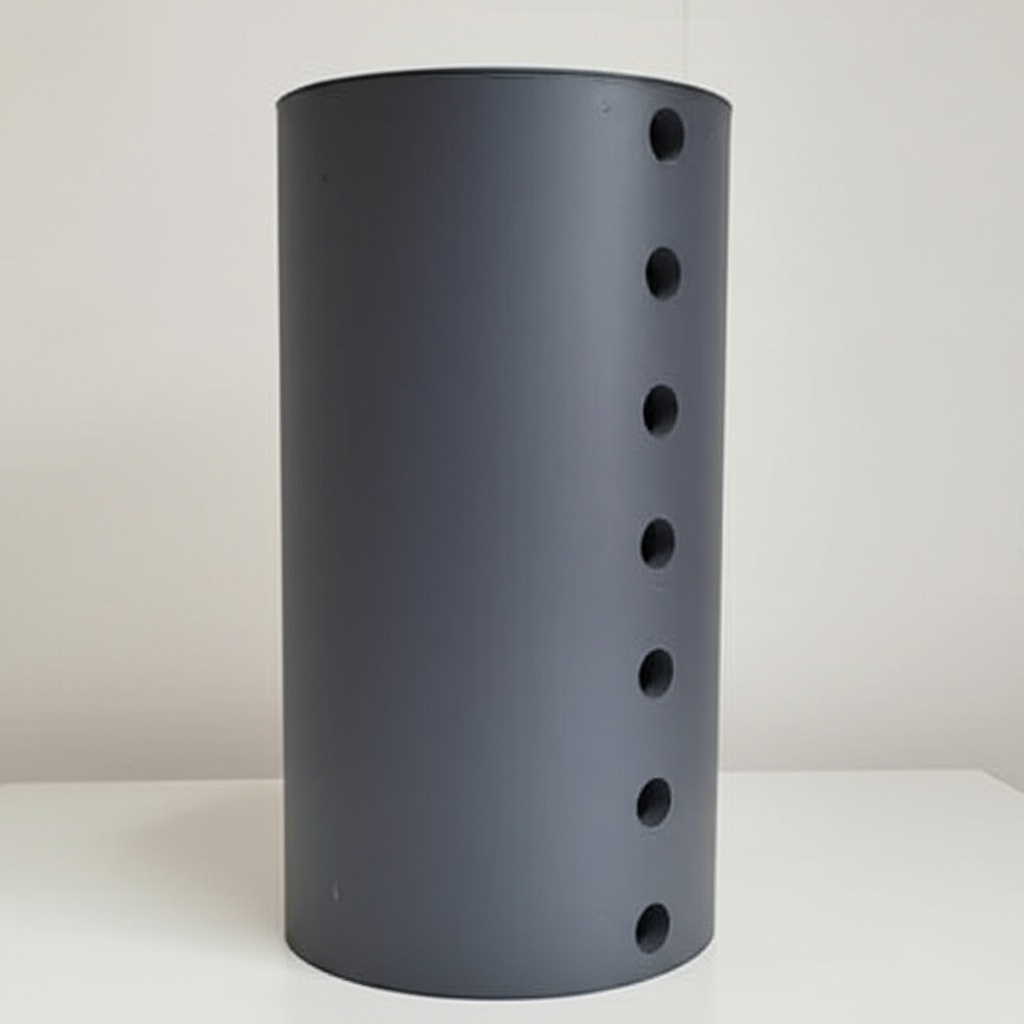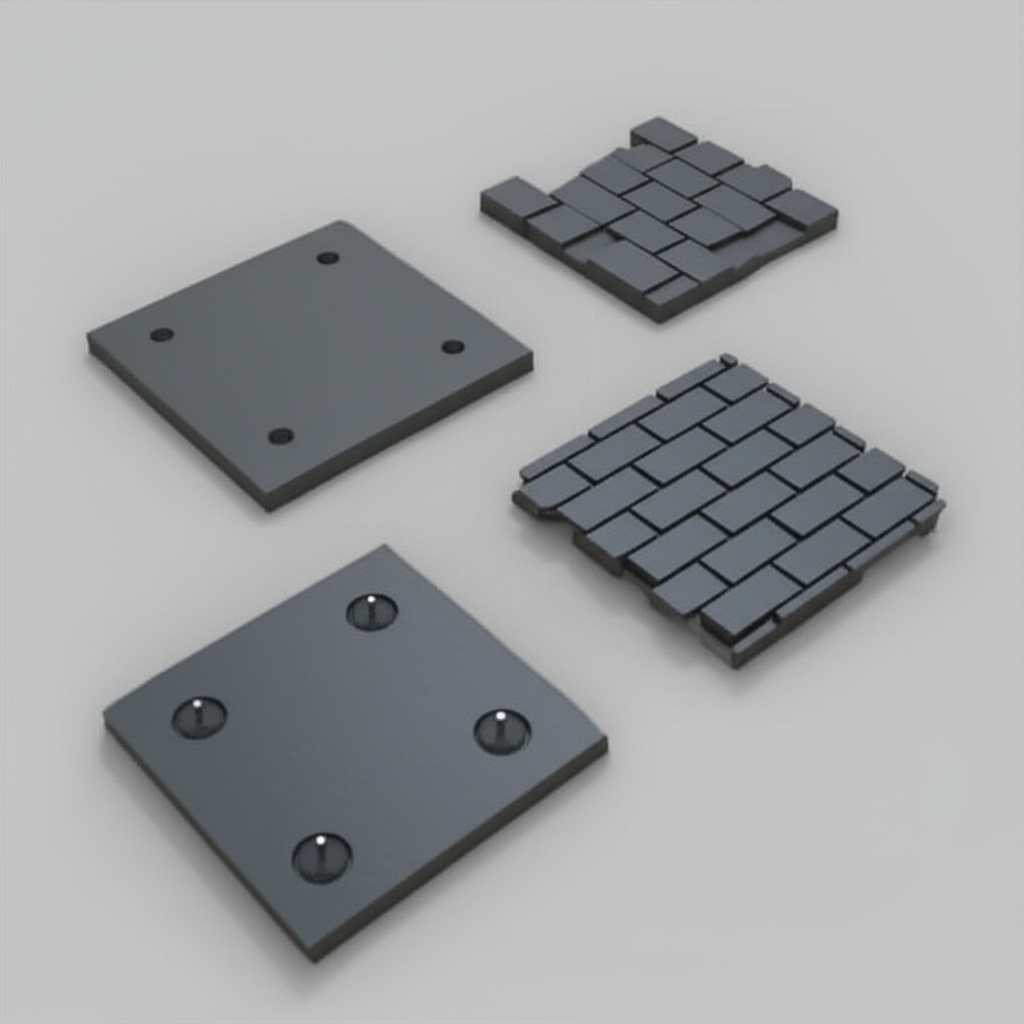Aerospace: The SiC Advantage Takes Flight
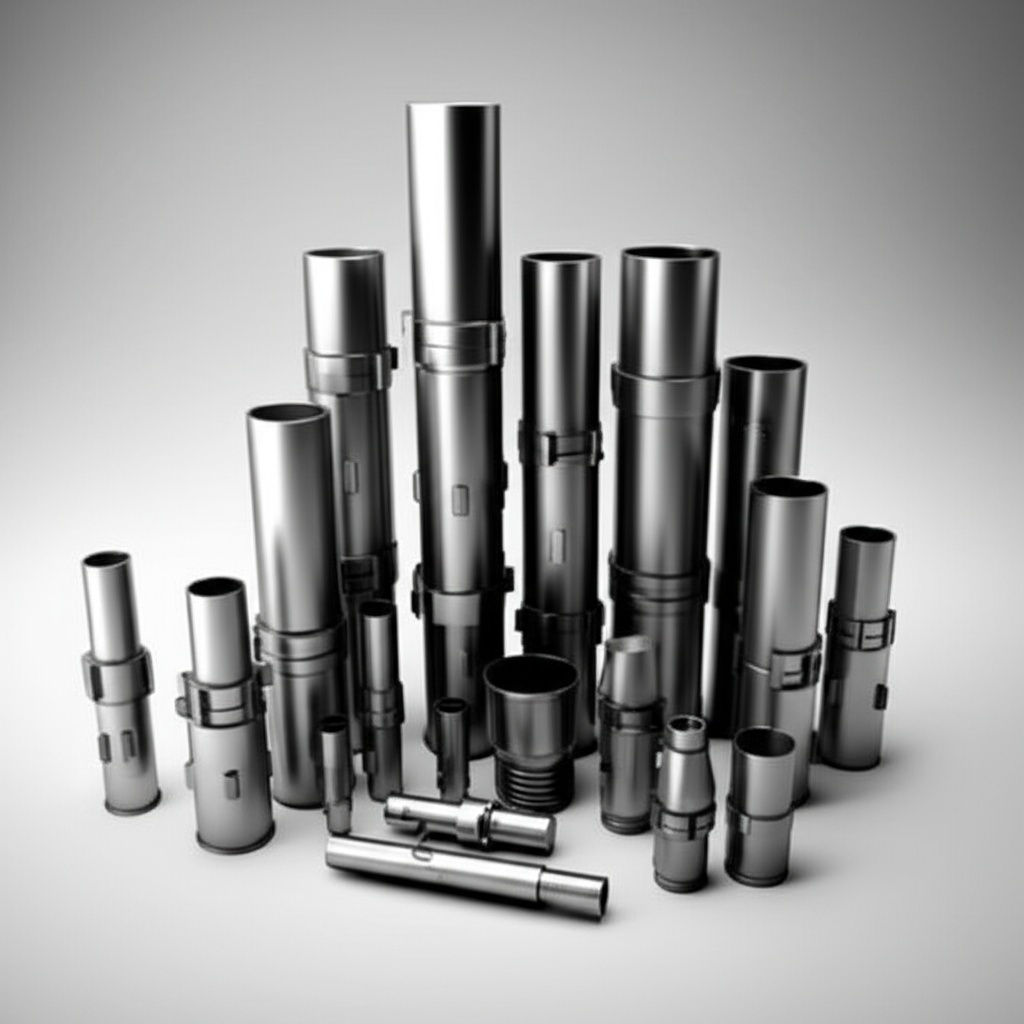
Share
Aerospace: The SiC Advantage Takes Flight
The aerospace industry continually pushes the boundaries of material science, seeking components that offer exceptional performance under the most demanding conditions. Among advanced ceramics, custom silicon carbide (SiC) has emerged as a transformative material, enabling unprecedented advancements in aircraft, spacecraft, and defense systems. Its unique combination of properties makes it indispensable for applications where extreme temperatures, high strength-to-weight ratios, and superior durability are paramount.
Introduction: Silicon Carbide – Propelling Aerospace Innovation
Silicon carbide (SiC) is a synthetic crystalline compound of silicon and carbon. In its engineered form, particularly as a technical ceramic, SiC offers a remarkable suite of properties that are highly attractive for aerospace applications. Custom SiC components are specifically designed and manufactured to meet the precise requirements of a particular aerospace system, ensuring optimal performance, reliability, and longevity. Unlike traditional aerospace materials like titanium or aluminum alloys, SiC excels in ultra-high temperature environments, maintains its structural integrity under significant mechanical stress, and exhibits exceptional resistance to wear and chemical corrosion. This makes aerospace-grade SiC crucial for next-generation engines, thermal protection systems, lightweight optical systems, and critical wear components, allowing engineers to design systems that are lighter, faster, more efficient, and capable of operating in previously inaccessible environments. The ability to tailor SiC properties through specialized manufacturing processes further enhances its value, making custom SiC solutions a cornerstone of modern aerospace innovation.
Key Aerospace Applications: Where SiC Takes Flight
The versatility and exceptional properties of silicon carbide components have led to their adoption in a wide array of critical aerospace applications. These applications leverage SiC’s thermal stability, mechanical strength, hardness, and lightweight nature.
- Satellite and Telescope Optics: SiC’s low thermal expansion, high thermal conductivity, and excellent stiffness-to-weight ratio make it an ideal material for mirrors and optical benches in space-based telescopes and Earth observation satellites. SiC mirrors maintain their precise shape even with significant temperature fluctuations, ensuring high-resolution imaging.
- Rocket Nozzles and Propulsion Components: In rocket engines, SiC is used for throat inserts and nozzle extensions due to its ability to withstand extremely high temperatures (up to 2000°C or higher in some grades) and resist erosion from hot gases. This improves engine performance and lifespan.
- Gas Turbine Engine Components: Parts like combustion liners, nozzle vanes, and turbine blades made from SiC or SiC-based ceramic matrix composites (CMCs) can operate at higher temperatures than metal superalloys. This leads to increased engine efficiency, reduced fuel consumption, and lower emissions for high-performance aircraft.
- Thermal Protection Systems (TPS): For re-entry vehicles and hypersonic aircraft, SiC provides robust thermal protection against the extreme heat generated by atmospheric friction. Its high emissivity and oxidation resistance are critical for these applications.
- Wear-Resistant Components: Bearings, seals, and pump components in aerospace systems benefit from SiC’s extreme hardness and low friction coefficient, leading to longer service life and reduced maintenance for durable aerospace parts.
- Armor and Protection Systems: SiC’s hardness and relatively low density make it suitable for lightweight armor applications in military aircraft and vehicles, offering protection against ballistic threats.
- Heat Exchangers for High-Temperature Systems: The excellent thermal conductivity and high-temperature stability of SiC allow for the design of compact and efficient heat exchangers for aerospace thermal management systems.
The ongoing development in SiC manufacturing continues to expand its applicability in the aerospace sector, promising even more innovative uses in the future.
The Unmatched Advantages: Why Custom SiC for Aerospace Demands?
The aerospace industry’s relentless pursuit of higher performance, greater efficiency, and enhanced reliability under extreme operating conditions makes custom silicon carbide an increasingly indispensable material. Its advantages over traditional materials and even other ceramics are significant, particularly when components are tailored for specific aerospace demands.
- Superior Strength-to-Weight Ratio: SiC is significantly lighter than most metals yet possesses exceptional strength and stiffness. This is crucial for aerospace applications where weight reduction directly translates to improved fuel efficiency, increased payload capacity, and better maneuverability. Lightweight SiC aerospace components are key to achieving these goals.
- Exceptional Thermal Stability: SiC maintains its mechanical properties at extremely high temperatures (often exceeding 1600°C). This allows for higher operating temperatures in engines and provides robust thermal protection for components exposed to aerodynamic heating. Its low coefficient of thermal expansion (CTE) ensures dimensional stability across wide temperature ranges.
- High Thermal Conductivity: Unlike many ceramics, certain grades of SiC exhibit high thermal conductivity, enabling efficient heat dissipation. This is vital for cooling sensitive electronics, managing heat in engines, and preventing thermal shock in thermal management aerospace systems.
- Extreme Hardness and Wear Resistance: SiC is one of the hardest commercially available materials, surpassed only by diamond and boron carbide. This translates to outstanding resistance to abrasion, erosion, and sliding wear, making it ideal for components like seals, bearings, nozzles, and protective coatings.
- Excellent Chemical Inertness and Corrosion Resistance: SiC is highly resistant to attack by most chemicals, including corrosive fuels, oxidizers, and hot gases encountered in aerospace environments. This ensures longevity and reliability of components.
- Radiation Resistance: For space applications, SiC exhibits good resistance to various forms of radiation, ensuring the stability and performance of components in the harsh environment of space.
- Tailorable Properties through Customization: The properties of SiC can be fine-tuned through careful control of raw materials, manufacturing processes (e.g., reaction-bonding, sintering, CVD), and microstructural engineering. Custom SiC design allows for optimization of density, porosity, grain size, and secondary phases to meet specific aerospace performance targets.
- Dimensional Stability: SiC components, once fabricated, exhibit excellent long-term dimensional stability, critical for precision instruments like mirrors and guidance systems.
These advantages make advanced SiC materials not just a viable alternative but often the superior choice for a growing range of demanding aerospace applications, pushing the boundaries of what’s possible in flight and space exploration.
Tailoring Performance: Recommended SiC Grades for Aerospace Missions
The selection of an appropriate silicon carbide grade is critical for optimizing performance in specific aerospace applications. Different manufacturing processes yield SiC materials with varying properties, densities, and purities. Key grades relevant to the aerospace industry include:
| SiC Grade | Manufacturing Process | Key Characteristics for Aerospace | Typical Aerospace Applications |
|---|---|---|---|
| Sintered Silicon Carbide (SSiC / Alpha-SiC) | Solid-state sintering of fine SiC powder at high temperatures (typically >2000°C) with sintering aids. | High purity, very high strength and hardness, excellent corrosion resistance, good thermal shock resistance, maintains strength at high temperatures (~1600°C). Fine grain structure. | High-temperature engine components (blades, vanes), wear parts (seals, bearings), rocket components, heat exchanger tubes, armor. SSiC aerospace parts. |
| Reaction-Bonded Silicon Carbide (RBSiC / SiSiC) | Infiltration of molten silicon into a porous preform of SiC and carbon. The silicon reacts with carbon to form more SiC, bonding the original SiC grains. Contains some free silicon (typically 8-15%). | Good strength and hardness, excellent thermal shock resistance, high thermal conductivity, near-net-shape manufacturing capability, relatively lower cost. Max service temperature limited by silicon melting point (~1350°C – 1400°C). | Structural components, heat spreaders, pump components, large complex shapes, RBSiC aerospace components where extreme temperature is not the sole driver but thermal conductivity and complex shape are important. |
| Chemical Vapor Deposited SiC (CVD-SiC) | Deposition from gaseous precursors onto a heated substrate. | Ultra-high purity (99.999%+), theoretically dense, excellent chemical resistance, superior surface finish possible, good thermal conductivity. Can be deposited as coatings or bulk material. | Semiconductor processing equipment components (also relevant for aerospace electronics), high-performance optics, protective coatings for C/C composites, high-purity SiC aerospace applications. |
| Nitride-Bonded Silicon Carbide (NBSiC) | SiC grains bonded by a silicon nitride (Si3N4) phase. | Good thermal shock resistance, good strength at moderate temperatures, resistant to molten metals. | Less common in primary aerospace structures but may find use in specific industrial process equipment related to aerospace material production. |
| Carbon Fiber-Reinforced Silicon Carbide (C/SiC Composites) | Carbon fibers embedded in a SiC matrix. | Significantly improved fracture toughness over monolithic SiC (“graceful failure”), very high-temperature capability, lightweight, excellent thermal shock resistance. | Leading edges of hypersonic vehicles, rocket nozzles, brake discs for aircraft, hot structures in advanced engines. SiC CMC aerospace. |
The choice of SiC grade will depend on a careful analysis of the operating environment, mechanical loads, thermal conditions, and cost considerations for the specific aerospace mission. Working with an experienced silicon carbide supplier is crucial for selecting and developing the optimal material solution.
Designing for the Skies: Critical Considerations for Aerospace SiC Components
Designing components with silicon carbide for aerospace applications requires a different approach compared to traditional metals due to SiC’s ceramic nature, primarily its brittleness. However, with careful design considerations, engineers can fully leverage SiC’s outstanding properties. Key factors include:
- Managing Brittleness:
- Incorporate generous radii and fillets to reduce stress concentrations at corners and edges.
- Avoid sharp notches or sudden changes in cross-section.
- Design for compressive loads where possible, as ceramics are much stronger in compression than in tension.
- Consider pre-stressing techniques if tensile loads are unavoidable.
- Component Geometry and Manufacturability:
- While complex shapes are achievable, especially with RBSiC or additive manufacturing techniques for SiC, simpler geometries often lead to lower costs and higher reliability.
- Understand the limitations of the chosen manufacturing process (e.g., green machining, sintering shrinkage, diamond grinding capabilities). Precision SiC machining aerospace is a specialized field.
- Design with near-net-shape manufacturing in mind to minimize costly and time-consuming post-sintering machining.
- Wall Thickness and Aspect Ratios:
- Maintain uniform wall thicknesses to prevent stress during sintering and in thermal cycling.
- Avoid extremely thin sections or very high aspect ratios unless absolutely necessary and validated through rigorous analysis, as these can be prone to fracture or warping.
- Attachment and Joining:
- Designing how SiC components will integrate with other parts (metallic or ceramic) is crucial. Differential thermal expansion must be accommodated.
- Mechanical clamping, brazing (with active braze alloys), and diffusion bonding are common methods, each with specific design requirements.
- Stress Analysis and Lifetime Prediction:
- Utilize advanced Finite Element Analysis (FEA) to predict stress distributions under operational loads (mechanical, thermal, vibrational). Probabilistic design methodologies (e.g., Weibull statistics) are often employed to account for the statistical nature of ceramic strength.
- Consider factors like slow crack growth and cyclic fatigue, especially for long-duration missions.
- Weight Optimization:
- While SiC is relatively lightweight, design features like internal cavities or ribbed structures can further reduce mass without compromising necessary strength, critical for lightweight aerospace structures.
- Tolerancing:
- Specify tolerances that are achievable with the chosen SiC grade and manufacturing process. Overly tight tolerances can significantly increase costs.
- Environmental Factors:
- Consider the full range of environmental exposures: temperature extremes, corrosive atmospheres, radiation, and potential impact events.
Collaborating closely with custom SiC component manufacturers from the early design stages is vital to ensure a successful and cost-effective aerospace application.
Precision Engineered: Achieving Tight Tolerances and Superior Surface Finishes for Aerospace SiC
In the demanding realm of aerospace, precision is not just a goal but a necessity. For silicon carbide components, achieving tight dimensional tolerances and specific surface finishes is critical for functionality, reliability, and performance. This is particularly true for optical systems, high-speed rotating parts, and interfacing components.
Achievable tolerances for SiC parts depend on several factors:
- SiC Grade: Different grades (RBSiC, SSiC) have different shrinkage rates and machining characteristics.
- Manufacturing Process: Near-net-shape forming processes can reduce the amount of post-sintering machining, but the tightest tolerances are typically achieved through diamond grinding and lapping.
- Component Size and Complexity: Larger and more complex parts inherently present greater challenges in maintaining uniform tolerances.
Typical Achievable Tolerances:
- As-Sintered Tolerances: Generally in the range of ±0.5% to ±2% of the dimension, depending on the SiC grade and process control.
- Machined Tolerances (Grinding): Standard machined tolerances can often reach ±0.01 mm to ±0.05 mm (±0.0004″ to ±0.002″). For highly specialized applications, even tighter tolerances down to a few microns (µm) are possible. Precision SiC machining is key.
Surface Finish Options and Their Impact:
The surface finish of an SiC component significantly impacts its performance characteristics, such as friction, wear, optical reflectivity, and sealing capability.
- As-Fired Surface: The surface condition after sintering, typically rougher and suitable for applications where tight tolerances or specific finishes are not paramount.
- Ground Surface: Achieved by diamond grinding wheels. Surface roughness (Ra) can range from 0.2 µm to 0.8 µm (8 to 32 µinches) or better. This is a common finish for many mechanical components.
- Lapped Surface: A further refinement process using fine abrasive slurries. Lapping can achieve Ra values down to 0.02 µm to 0.1 µm (1 to 4 µinches). Essential for dynamic seals and some bearing surfaces.
- Polished Surface: For optical applications like SiC mirrors aerospace, polishing can achieve exceptionally smooth surfaces with Ra values often less than 0.005 µm (sub-nanometer for super-polishing). This minimizes light scattering and maximizes reflectivity.
Importance in Aerospace:
- Optical Systems: Require exquisitely polished surfaces with precise figure control for mirrors and lenses.
- Bearings and Seals: Need smooth, lapped surfaces to minimize friction and wear, ensuring long life and efficient operation in engines and actuators.
- Aerodynamic Surfaces: Smooth finishes can contribute to reduced drag on certain components.
- Interfacing Components: Precise dimensions and controlled surface textures are vital for proper fit and load transfer between SiC parts and other materials.
Achieving these levels of precision requires specialized equipment, experienced technicians, and robust metrology capabilities. When specifying tolerances and surface finishes, it’s crucial to balance the functional requirements with manufacturing feasibility and cost. Engaging with a knowledgeable technical ceramics supplier early in the design phase can help optimize these specifications for aerospace success.
Enhancing Flightworthiness: Post-Processing Techniques for Aerospace SiC
While the inherent properties of silicon carbide are outstanding, post-processing steps are often necessary to meet the stringent and highly specific demands of aerospace applications. These treatments enhance performance, durability, and functionality, ensuring that SiC components are truly “flightworthy.”
Common post-processing techniques include:
- Diamond Grinding:
- Purpose: To achieve precise dimensional accuracy, tight tolerances, and specific geometric features that cannot be formed during initial shaping and sintering.
- Process: Utilizes diamond abrasive wheels due to SiC’s extreme hardness. Requires specialized machinery and expertise to avoid inducing surface or subsurface damage.
- Aerospace Relevance: Critical for nearly all precision SiC aerospace components, from engine parts to optical substrates. Custom SiC grinding is a core capability.
- Lapping and Polishing:
- Purpose: To achieve ultra-smooth surface finishes (low Ra values) and high levels of flatness or specific curvatures.
- Process: Lapping involves using fine abrasive slurries between the SiC part and a flat plate. Polishing uses even finer abrasives and specialized pads, often with chemical-mechanical planarization (CMP) techniques for optical surfaces.
- Aerospace Relevance: Essential for SiC optical components (mirrors, windows), high-performance seals, bearings, and any application requiring minimal friction or light scatter.
- Specialized Coatings:
- Purpose: To add or enhance specific surface properties not inherent to the bulk SiC material.
- Types & Aerospace Relevance:
- Oxidation Barrier Coatings (e.g., Mullite, YSZ): For applications exceeding the typical oxidation limits of SiC, especially for C/SiC composites at very high temperatures, to prevent degradation.
- Reflective Coatings (e.g., Aluminum, Gold, Silver, Dielectric Stacks): Applied to SiC mirrors to achieve desired reflectivity across specific wavelengths for telescopes and optical instruments.
- Anti-Reflection (AR) Coatings: For SiC windows or lenses to maximize light transmission.
- Wear-Resistant Coatings (e.g., Diamond-Like Carbon – DLC): Though SiC is very hard, sometimes an even lower friction surface or specific tribological pairing is needed.
- Environmental Barrier Coatings (EBCs): Protect SiC and SiC CMCs from water vapor and other corrosive elements in combustion environments.
- Edge Chamfering and Radiusing:
- Purpose: To remove sharp edges which can be points of stress concentration and potential chipping, improving the component’s toughness and handling safety.
- Aerospace Relevance: Standard practice for most ceramic components to improve robustness.
- Cleaning and Surface Treatment:
- Purpose: To ensure components are free from contaminants before assembly or further processing (like coating). Specific surface treatments can also improve adhesion for coatings or bonding.
- Aerospace Relevance: Critical for high-reliability applications, especially in optics and sensitive electronic or fluid systems.
- Non-Destructive Testing (NDT):
- Purpose: While not a modification process, NDT (e.g., X-ray, ultrasonic testing, fluorescent penetrant inspection) is a crucial post-processing quality control step to detect internal flaws or surface cracks.
- Aerospace Relevance: Mandatory for many critical flight components to ensure structural integrity.
The selection and execution of these post-processing steps require significant expertise and specialized equipment. Partnering with a full-service SiC provider who understands the nuances of aerospace requirements is essential for achieving optimal component performance and reliability.
Navigating Challenges: Overcoming Hurdles in Aerospace SiC Implementation
While silicon carbide offers game-changing advantages for aerospace, its implementation is not without challenges. Understanding these potential hurdles and employing strategies to mitigate them is key to successfully leveraging SiC’s full potential.
- Intrinsic Brittleness:
- Challenge: Like most ceramics, SiC is inherently brittle, meaning it has low fracture toughness compared to metals. It does not deform plastically before fracture, which can lead to catastrophic failure if not properly designed for.
- Mitigation Strategies:
- Employ fracture mechanics principles in design (e.g., generous radii, avoiding stress concentrators).
- Utilize probabilistic design methods (e.g., Weibull analysis) to account for material strength variability.
- Consider SiC composites (like C/SiC) which offer significantly improved toughness (“graceful failure”).
- Implement rigorous quality control and NDT to screen out flawed components.
- Design for compressive loading where feasible.
- Machining Complexity and Cost:
- Challenge: SiC’s extreme hardness makes it difficult and time-consuming to machine, requiring diamond tooling and specialized equipment. This can lead to higher machining costs compared to metals.
- Mitigation Strategies:
- Design for near-net-shape manufacturing to minimize material removal.
- Optimize designs for manufacturability with SiC in mind.
- Work with experienced SiC machining specialists who have optimized processes.
- Explore advanced manufacturing techniques like additive manufacturing for complex SiC geometries, which can reduce machining needs.
- Thermal Management and Shock Resistance:
- Challenge: While SiC has excellent high-temperature stability, rapid temperature changes (thermal shock) can induce stresses leading to fracture, especially in complex shapes or constrained parts. Different SiC grades have varying thermal shock resistance.
- Mitigation Strategies:
- Select SiC grades with high thermal conductivity and low thermal expansion (e.g., RBSiC often has better thermal shock resistance than SSiC due to higher thermal conductivity).
- Design components to minimize thermal gradients and constraints.
- Perform thorough thermal analysis (FEA) to predict and manage thermal stresses.
- Joining SiC to Other Materials:
- Challenge: Joining SiC to metals or other ceramics can be difficult due to mismatches in coefficients of thermal expansion (CTE), leading to stress at the joint during thermal cycling.
- Mitigation Strategies:
- Use compliant interlayers or graded joints.
- Employ specialized joining techniques like active metal brazing, diffusion bonding, or mechanical fastening designed to accommodate CTE mismatch.
- Careful design of the joint geometry.
- Cost-Effective Manufacturing for Aerospace Volumes:
- Challenge: Aerospace applications often require high reliability and performance, but production volumes may be lower than in other industries, impacting economies of scale for custom SiC part production.
- Mitigation Strategies:
- Standardize designs where possible.
- Invest in process optimization and automation for repetitive tasks.
- Long-term partnerships with suppliers can help stabilize costs.
- Consider total lifecycle cost, as SiC’s durability can offset higher initial investment.
- Material Characterization and Qualification:
- Challenge: Ensuring consistent material properties and qualifying SiC components for critical aerospace applications requires extensive testing and robust quality assurance.
- Mitigation Strategies:
- Partner with suppliers who have strong material science expertise and comprehensive testing facilities.
- Adhere to established aerospace material qualification protocols (e.g., those based on MMPDS for ceramics).
- Maintain detailed traceability of materials and processes.
Overcoming these challenges often involves close collaboration between the aerospace design engineers and expert silicon carbide manufacturers. An experienced partner can provide invaluable insights into material selection, design optimization, and manufacturing processes tailored to the unique demands of the aerospace sector.
Choosing Your Aerospace SiC Partner: Expertise and Reliability are Key
Selecting the right supplier for custom silicon carbide components is a critical decision that can significantly impact the success of an aerospace project. The unique demands of the industry – extreme performance, unwavering reliability, and stringent quality standards – necessitate a partner with specialized expertise and proven capabilities. When evaluating potential aerospace SiC suppliers, consider the following factors:
- Aerospace Industry Experience: Does the supplier have a track record of successfully delivering SiC components for aer

About the Author: Sicarb Tech
We provide clear and reliable insights into silicon carbide materials, component manufacturing, application technologies, and global market trends. Our content reflects industry expertise, practical experience, and a commitment to helping readers understand the evolving SiC landscape.
